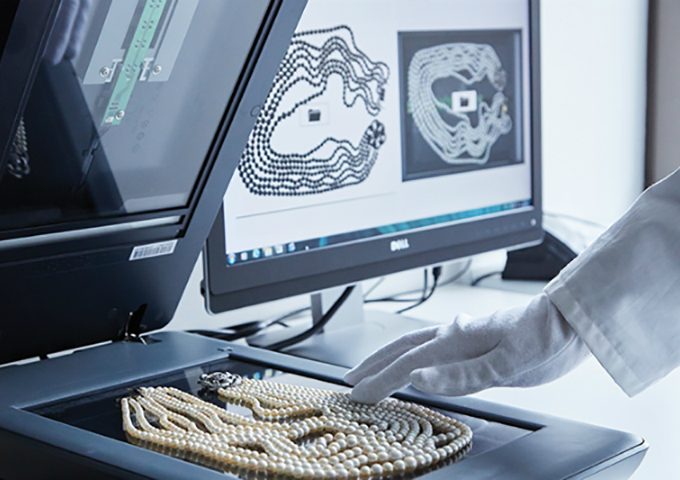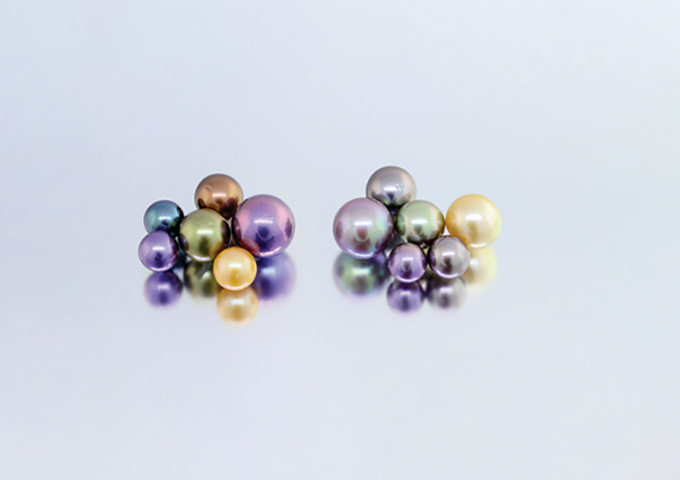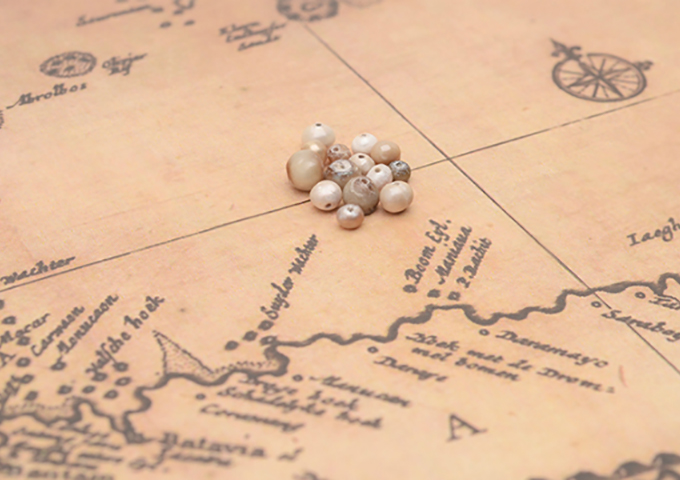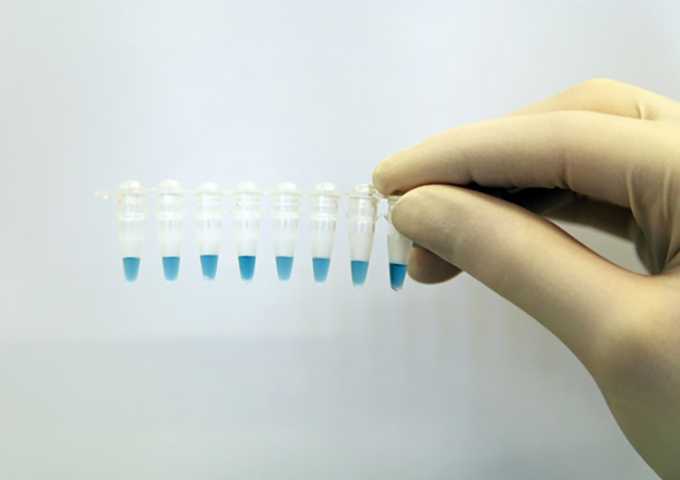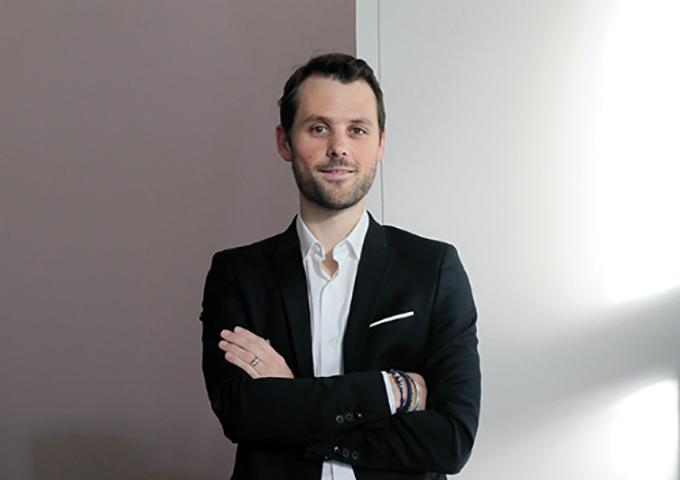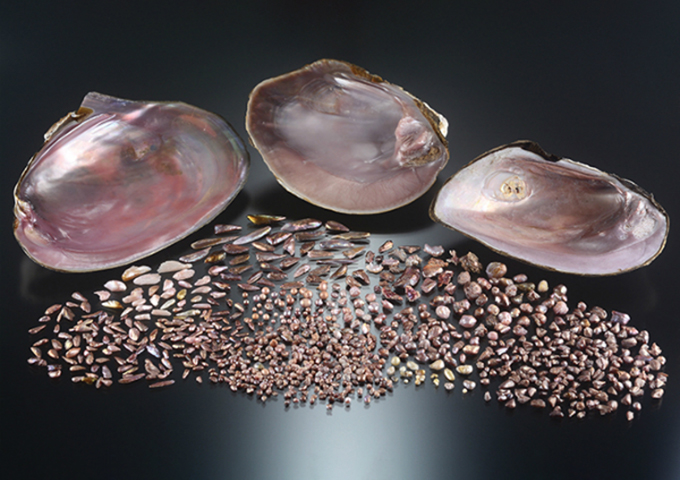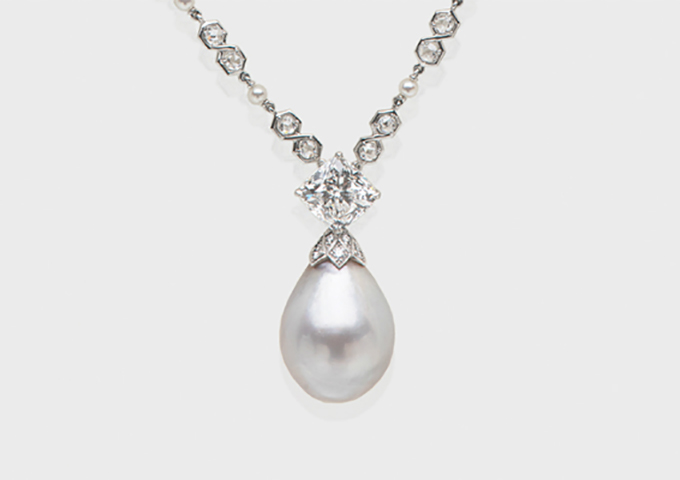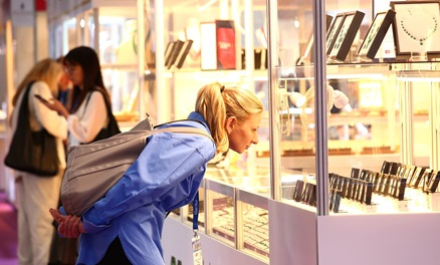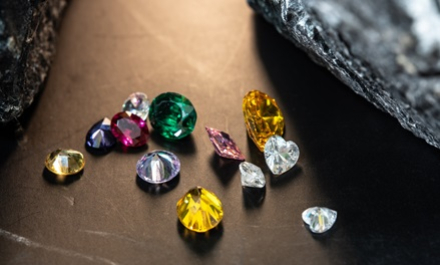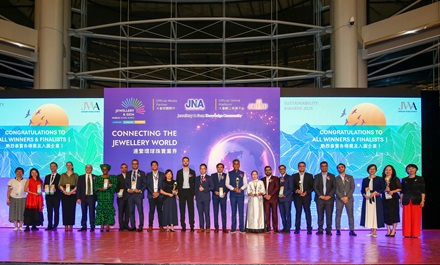The Gemological Institute of America and the Swiss Gemmological Institute SSEF reveal the latest in the science of pearl testing – from new identification techniques to the emerging role of e-commerce in the future of the sector.
Several technological innovations in pearl testing have taken shape in international jewellery circles over the years – further cementing the role of gemmological laboratories in promoting consumer confidence and transparency in the pearl sector.
Two of the industry’s leading gemmological laboratories – the Gemological Institute of America and the Swiss Gemmological Institute SSEF – are keeping the torch burning with recent advances in this arena. They also identified challenges for the pearl sector amid the Covid-19 pandemic as well as opportunities for growth from a gemmological lab’s perspective.
Modern tools and techniques
Research projects are continuously carried out at GIA, according to Chunhui Zhou, senior manager for Pearl Identification & Research at GIA. Some of the ongoing initiatives include studies on natural and cultured pearls of different localities and molluscs species as well as treatment detection.
The institute recently reported about DNA barcoding and next-generation sequencing of freshwater pearls, and the use of fluorescence spectroscopy to screen colour-treated pearls – unconventional techniques that can further aid in pearl identification.
GIA is also launching a new smaller and more affordable Cultured Pearl Classification Report. It contains a detailed classification of each of the GIA 7 Pearl Value FactorsTM, which provide a systematic way to evaluate pearls of all types and to simplify pearl quality descriptions. The seven factors are size, shape, colour, nacre, lustre, surface and matching. These are specifically and exclusively for Akoya, South Sea and Tahitian pearls.
The new report will first be made available in New York and subsequently rolled out in other locations.
GIA recently tested two pearls that proved challenging to identify due to trace element anomalies. According to GIA, pearl testing is almost always relatively straightforward, but the need for more sophisticated methods to detect and classify different cases is apparent.
“While it is important to continue our research on modern identification tools and techniques, it is also necessary to understand that pearls are created by living organisms, which may exhibit unusual gemmological, physical and chemical properties based on their living conditions and biological responses to irritation. Oddity will always exist in nature, which can create challenging and intriguing specimens,” noted Zhou.
Continuous innovation is likewise a top priority at SSEF, with the launch of its DNA testing technology for pearls in June this year.
According to Laurent E. Cartier, project manager at SSEF, the gem lab was the first to introduce DNA testing of pearls to conclusively identify their species. This new approach to pearl testing was met with positive response from the industry. SSEF can also provide DNA testing for ivory and precious corals.
The new service, which uses DNA fingerprinting technology, was developed in partnership with the Institute of Forensic Medicine at the University of Zurich. It is an expansion of SSEF’s DNA fingerprinting reference database and capabilities, which now include eight oyster species that produce the majority of pearls found in the natural and cultured pearl trade.
The quasi non-destructive method has since been refined further, and the amount of material required from the pearl for testing has been considerably reduced to an infinitesimal amount, the gem lab said.
In 2017, SSEF introduced radiocarbon age dating of pearls, which made waves across the trade, especially for high-end natural pearls.
“We have dated some exceptional historic natural pearls using this method in recent months and years. Such previously unavailable information provides important insights and documentation into the history and provenance of a pearl,” revealed Cartier.
Over the past few decades, SSEF has analysed outstanding natural pearls in the market. These include the La Peregrina pearl, a massive natural pearl discovered in the 16th century and previously owned by members of various royal families and Hollywood actress Elizabeth Taylor. The pearl was sold to an anonymous buyer for US$11 million at a 2011 auction.
The lab also examined the Marie-Antoinette pearl pendant and the Ana Maria pearl, to name a few. “As a true highlight of this illustrious collection, we recently had the pleasure to analyse the Queen Mary Pearl, a drop-shaped natural pearl of 41.5 carats (166 grains) of the finest quality and lustre,” Cartier noted.
GIA meanwhile tested a unique natural round-shaped melo pearl weighing more than 250 carats – one of the largest melo pearls examined by GIA. The lab also received a couple of high-quality necklaces adorned with large natural saltwater pearls from the Pinctada species, with one of them measuring 9mm to 15mm in diameter.
The gem lab likewise analysed a 15.53-carat natural pearl discovered by one of its clients while eating in a restaurant. GIA confirmed that the pearl formed in an edible oyster from the Ostreidae family.
Challenges and opportunities
Faced with the continuous threat of the Covid-19 pandemic, the future of the industry lies in the ability of cultured pearl farms to continue breeding stock and enhancing its resilience to diseases and climate change, according to Zhou of GIA.
The global pearl industry was hit hard by the coronavirus crisis, resulting in weaker demand and significantly lower revenues due to lockdowns, travel restrictions and cancellations of international trade shows.
Zhou however sees opportunities for growth in the digital space for pearl traders, especially with the advent of reasonably priced, design-centric pearl jewellery pieces that cater to younger buyers.
“Like many other industries, e-commerce is going to play an even more important role in the future growth of the pearl industry,” he noted. “More creative and affordable products tailored to the younger generation and better marketing strategies to raise awareness on pearls would drive the pearl business to new heights.”
Pearls also offer consumers with a plethora of choices – from natural or cultured pearl varieties to different colours, sizes and lustre, depending on the occasion. Creative and forward-thinking designs are seen to attract more interest in and demand for the versatile pearl, according to Zhou.
SSEF’s Cartier said the natural and cultured pearl sectors – while belonging to different product categories – face challenges due to the Covid-19 pandemic, adding that the trade depends on buyers and sellers being able to travel to do business. Recovery is therefore hinged upon the resumption of international travel.
Pearls’ inherent beauty however will always attract attention. As one of the oldest gems known to man, pearls are an important part of the jewellery industry, stated Cartier. “There is so much beauty, tradition and connection to nature in both natural and cultured pearls. That story is perhaps not being told enough. As a gem lab, we will continue to research and educate the trade and consumers about pearls, their history, how they form and share new scientific discoveries about pearls,” he continued.
With more discerning buyers, gem labs are also tasked with fostering transparency in the pearl trade.
Cartier said gem labs play a critical role in maintaining consumer confidence by carrying out their duty to examine and classify pearls through scientific techniques. Using latest methods such as age dating and DNA testing, SSEF is committed to providing further insights into the origin of a pearl.
This fuels the industry’s mandate to satisfy consumers’ increasing demand for information and documentation about the natural and cultured pearls that they are buying, he added.
GIA’s Zhou also highlighted a gem lab’s unique position to guard consumer trust particularly with e-commerce gaining traction in the jewellery and gemstone sector. “Without tangible goods in hand, an unbiased pearl identification or classification report from a gem lab will ensure trust and protect the consumer,” he added.




